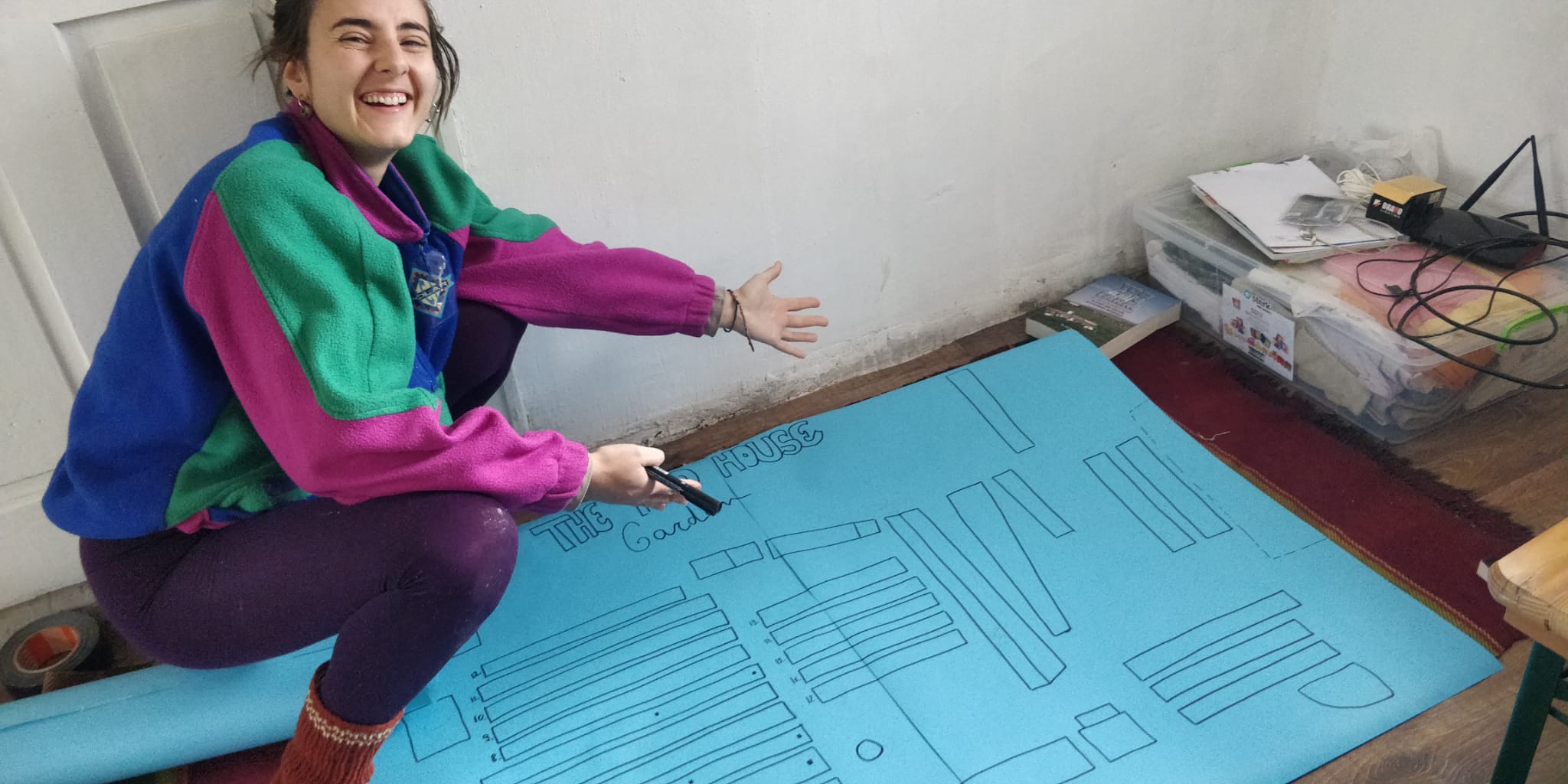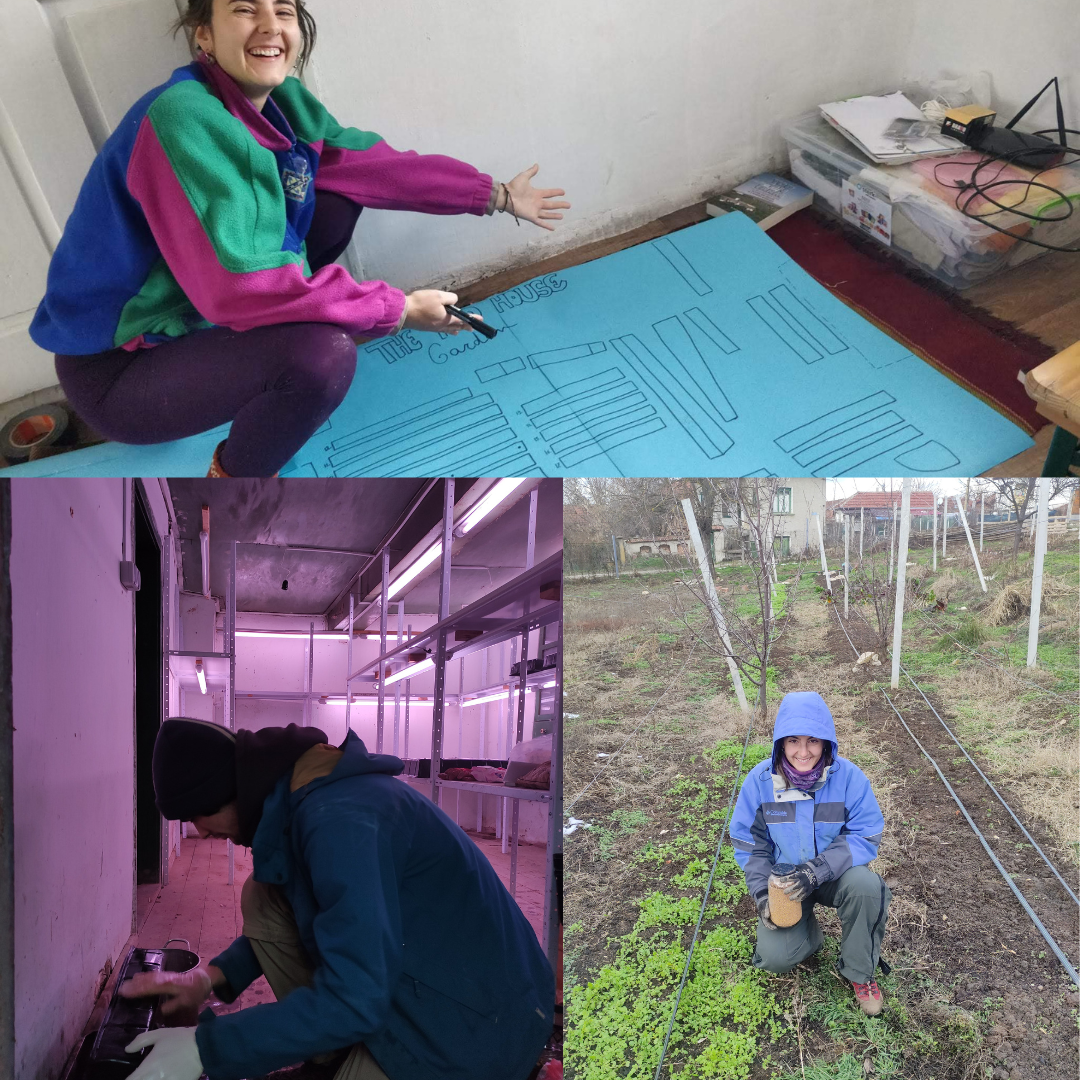Paula:
Welcome one week more to our blog!
Here in Todorovo bad weather has become into our faithful companion of adventure. Making seedlings has been one of our main priorities but most of the time we have been indoors. Thus, I will continue telling you more tips to improve your soil fertility.
- GREEN MANURE
Bare soil is something we must avoid in our garden. Although mulching is a good option, there are some alternatives that you should know! Green manures are crops that act as ground covers, preventing soil erosion and washout of nutrients. In addition, they help smothering weeds and supplying nitrogen and other nutrients. They are sown as seed in cleared vegetable patch (e.g. while it is not the growing season of that vegetable, acting as a form of crop rotation), between crops or under taller-growing crops. Green manure crops are usually incorporated back into the soil while they are still green (do not let it flower!) or after composting, thus building soil organic matter and soil structure.
Depending on the season, what you want to achieve and your kind of soil you should plant certain species (or a a mix of them). Here you will find some examples of commonly used annual green manures:
- Clovers: these plants are legumes, which mean they act as nitrogen fixers. Many varieties available depending on your needs.
- Hairy vetch (Vicia villosa): It is a cold-hardy and nitrogen fixing plant. Really good option if you want to prevent weeds.
- Mustard: fast-growing crop from the Brassica family that will survive over winter.
- Grazing rye (Secale cereale): overwintering crop best for improving soil structure.
- COMPOST
Whether you have a hot compost pile or you are making the most of your food scraps, there will be a moment to use that lovely finished compost! Compost can be used in multiple ways and it is a great You can use it as for mulch beds and perennials in the autumn, adding at least a 6 cm layer. In addition, at the beginning of the spring a 2-5 cm layer of compost in your garden beds will be of much help for the next harvest. It will improve moisture retention and create an aerated soil structure. As compost is biodegraded organic matter it will provide essential nutrients your plants and healthy soil organisms.
I hope this “Soil fertility” saga will encourage you take action. Manure, green manures and compost are an easy, cheap and effective way of improving your soil and thus your harvest. If you still have energy to learn more about this topic or just to back up all this new knowledge… have a look at this video!
See you next week permaculturers.
Paula
François:
Dear readers,
Still often trapped inside because of the terrible and nonetheless unpredictable winter weather, we finished planning the Red house’s garden for the next growing season. We drew a big map of the place and decided what to grow in each row, notably using companion planting. Now that we know what to plant, it’s time to start with the seedlings!
If you are as ignorant as I myself was at the beginning of my ESC, you might wonder what “seedlings” are. Technically, a seedling is just the first stage of a plant’s growth. But, by extension, it also refers to a common sowing technique.
It turns out that there are mainly two ways to sow a seed. The first one is direct sowing, and is exactly what you think it is: directly putting the seed into the soil, outside. Some plants, however, will die if you put them directly outside in the cold of winter and early spring, not mentioning that seedlings are very vulnerable to pests and diseases. Also, you might also want to start growing them before spring… so, how to reconcile all of these parameters? By starting growing them in a controlled environment -indoors- until they are strong enough to cope with the throes of life in an open world, and waiting for a better weather. Then they are ready for being transplanted. Which is what we refer to when we talk about “making seedlings“.
To quote one of my favorite agriculture influencer, Gardener Scott (subscribe!), “Plants need 5 things to grow: they need water, they need air, they need light, they need nutrients, and they need a proper temperature“. Meaning that we need to create an artificial environment which is able to provide them with all of these. So, let’s go through all of them:
- Air. This one is the less tricky, as air is usually quite abundant. However, if too many seedlings are growing next to one another, it might create a very humid environment, favorable to bacteria and fungi. Then you will need to give room for an airflow to prevent it.
- Light. A basic solution would be to put the seedlings next to the window, but it might be risky, as the temperature next to the window is cooler than in the rest of the room. Not to mention that, in the heart of winter, 6 hours of light exposure is not enough for seedlings. Actually, they need around 15 hours a day of light! So, there is no much other solutions than artificial light. Another parameter to keep in mind is that the light should be close (5-8 cm) and parallel to the soil. Indeed, seedlings will grow towards the light’s source to maximize their light exposure, and you want to avoid bent leggy seedlings. The best is to have a movable lamp, so that you can move it up as the plant grows. Don’t forget to switch off the light! Plants, just like humans, also need to rest. Not every kind of lighting is appropriate: avoid fluorescent lamps, as they are very hot and will end up frying the plants. Regarding the color, between 400 and 500 nm in wavelength (purple/blue) is the best.
- Temperature. This point is critical, although it shouldn’t be a big problem if you plan to grow seedlings in your home. The temperature shouldn’t go below 15°C on a daily basis. If it does, you should consider extra heating.
- Water. Giving the right amount of water is very important, and often plants are killed either by over- or underwatering. The soil should be evenly moist during the entire lifetime of the seedling. Avoid watering directly on the seedlings with a watering can, as the weight of the water could bend it down. You can either water from below, if possible, or use a spray.
- Nutrients. This point is very complex, and there is no such thing as a magical recipe. It’s always a good idea to put rich soil in the pots to begin with. You can even buy some potting soil that already contains nutrients in it. Some gardeners would argue that you need to fertilize regularly, and some others that a little bit at the beginning is enough, or even none at all if the soil is good enough. Anyway, keep in mind that, just like everything, fertilizers are to be used with parsimony.
Of course, it’s very hard and, one would say, impossible to perfectly regulate everything. And it’s okay! Just be creative and try your best 😉 Seedlings are fragile organisms that will be hard to handle at the beginning anyway.
As far as we are concerned, we put our seedlings on shelves in the Grey House, equipped with (non-movable) fancy purple neon lights. We started by cleaning the shelves and disinfecting the racks with hot water. We still have to figure out a way to heat the room… to be continued!
UP: Paula happy with the map of the garden (photo credit: François Dupé). LEFT: François disinfecting the racks (photo credit: Paula Ochoa Sánchez). RIGHT: Paula next to a green manure row, cointaining mustard, in the Sunny Yard (photo credit: François Dupé).



